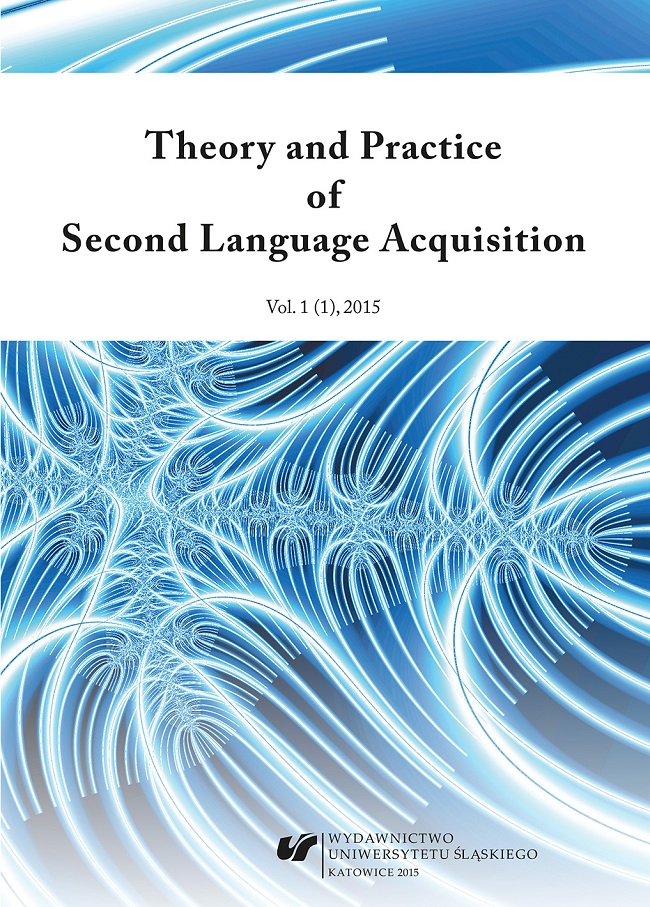Chaudron, C. (1979). Complexity of teacher speech and vocabulary explanation/ elaboration. In the 13th Annual TESOL Convention, Boston, Massachusetts.
Google Scholar
Cullen, R. (1998). Teacher talk and the classroom context. ELT journal, 52(3), 179-187.
Google Scholar
Doughty, C.J., & Long, M.H. (Eds.). (2003). The handbook of second language acquisition. Oxford: Blackwell.
Google Scholar
Ellis, R. (1994). The study of second language acquisition. Oxford: Oxford University Press.
Google Scholar
Ellis, R., & Barkhuizen, G. (2005). Analyzing Learner Language Oxford: Oxford University Press.
Google Scholar
Gaies, S.J. (1976). Sentence combining: A technique for assessing proficiency in a second language. Paper presented at the Conference on Perspectives on Language, University of Louisville, Louisville.
Google Scholar
Gaies, S. J. (1977). The nature of linguistic input in formal second language learning: linguistic and communicative strategies in ESL teachers’ classroom language. On Tesol, 77, 204-212.
Google Scholar
Gaies, S. J. (1983). The investigation of language classroom processes. TESOL Quarterly, 17(2), 207.
Google Scholar
Hákansson, G. (1986). Quantitative studies of teacher talk. In G. Kasper (Eds.), Learning, Teaching and Communication in the Foreign Language Classroom, 83-98.
Google Scholar
Hatch, E. M. (1983). Psycholinguistics: A Second Language Perspective. Newbury House Publishers, Inc., Rowley, MA 01969, 64.
Google Scholar
Henzl, V. (1973). Linguistic register of foreign language instruction. Language Learning, 23(2), 207-222.
Google Scholar
Henzl, V. (1979). Foreigner talk in the classroom. International Review of Applied Linguistics, 17/2, 159-165.
Google Scholar
Ishiguro, T. (1986). Simplification and elaboration in foreign language teacher talk and its source. Unpublished doctoral dissertation, Stanford University, California.
Google Scholar
Krashen, S. D. (1981). Second language acquisition and second language learning. Oxford: Pergamon Press.
Google Scholar
Krashen, S. D. (1982). Principles and Practice in Second Language Acquisition. Oxford: Pergamon Press, 21-64.
Google Scholar
Krashen, S.D. (1985). The Input Hypothesis: Issues and implications. London: Longman, 2.
Google Scholar
Pica, T., & Long, M. H. (1986). The linguistic and conversational performance of experienced and inexperienced teachers. Talking to learn: Conversation in second language acquisition, 85-98. Rowley, MA.: Newbury House.
Google Scholar
Seedhouse, P. (2004). The interactional architecture of the second language classroom: A conversational analysis perspective. Oxford: Blackwell.
Google Scholar
Wesche, M. B., & Ready, D. (1985). Foreigner talk in the university classroom. Input in Second Language Acquisition, 89-114.
Google Scholar
Wright, T. (2005). Classroom management in language education. Palgrave Macmillan, New York.
Google Scholar
Xiao-Yan, M. (2006). Teacher Talk and EFL in University Classrooms. Unpublished master’s thesis, Chongqing Normal University & Yangtze Normal University, China, 5-13.
Google Scholar
Xu, X. H. (2010). Analysis of teacher talk on the basis of relevance theory. Canadian Social Science, 6(3), 45-50
Google Scholar



 10.31261/tapsla
10.31261/tapsla